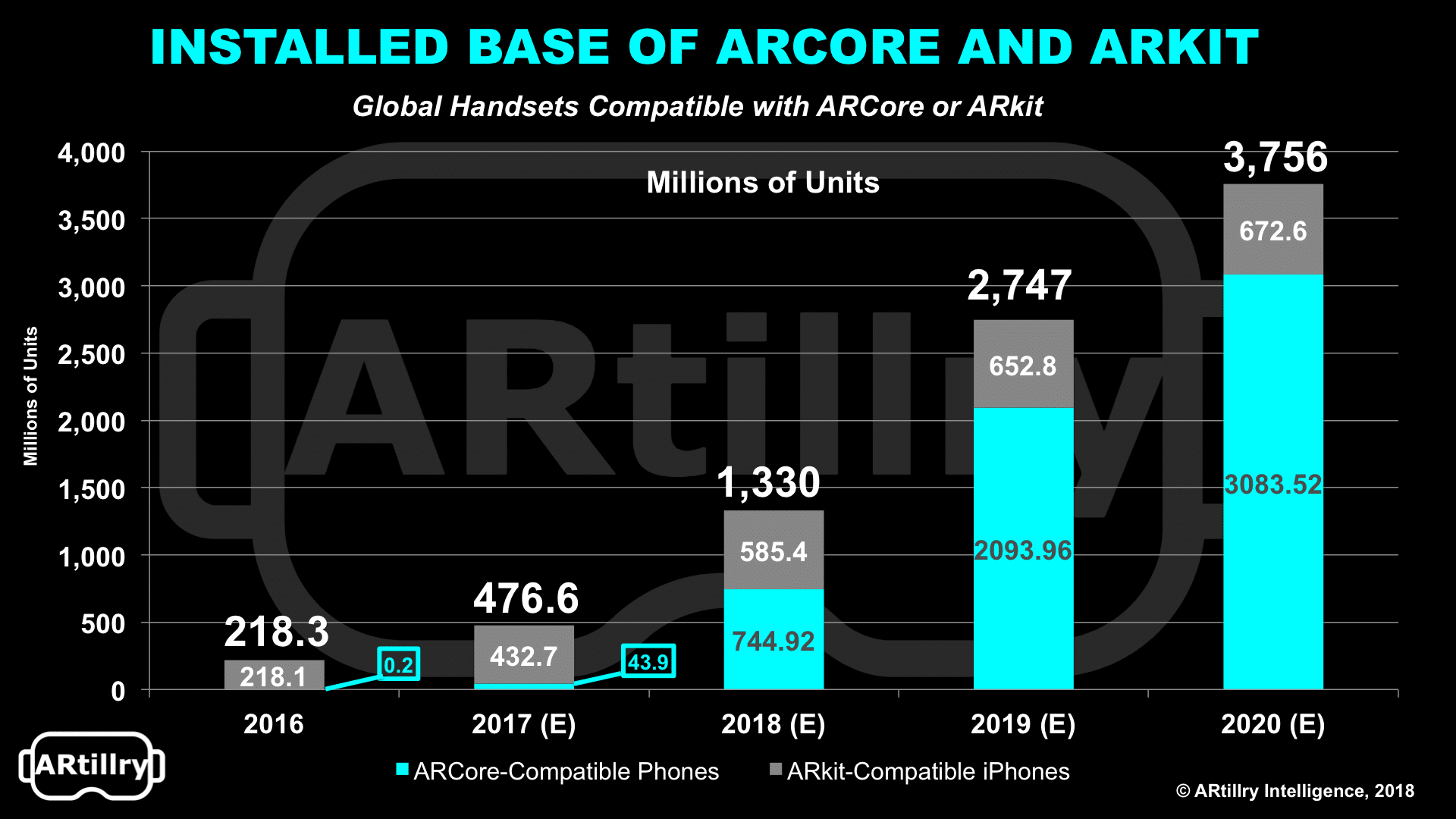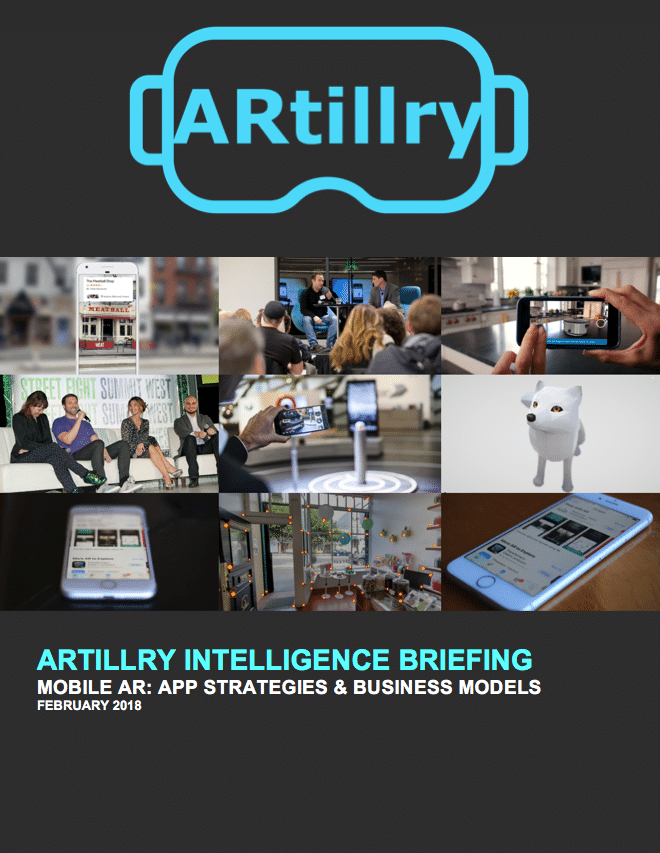
This post is excerpted from ARtillry’s latest Intelligence Briefing: Mobile AR: App Strategies and Business Models. It includes some of its data and takeaways. More can be previewed here and subscribe to access the full report.
Flowing from the product models and strategies examined so far, how are revenue models taking shape? Many will develop as consumer usage patterns evolve and inform revenue-generating tactics. Meanwhile, there are already signals that indicate where business models can develop.
Some models build on established app strategies. For example, in anything gaming-related, it’s been shown that in-app purchases are often more strategic than upfront app purchases. With utilities such as mapping and navigation, transactional or ad support to drive local commerce could be strategic.
In-App Purchases
Once again, a well-established app has many of the above properties: Pokémon Go. Its revenue model mostly involves in-app purchases, which drove more than $1 billion in revenue in 2016. Similar impulse-driven revenue from competitive game mechanics could drive AR revenue in other apps.
Pokémon Go has also revealed the viability of location based promotions and sponsorships. That so far includes cost-per-action advertising for visits to McDonalds in Japan. ARtillry Intelligence believes this will continue to evolve and gain share in Pokémon Go’s revenue mix, and that of other apps.
Moving forward, Niantic’s follow up game, Harry Potter: Wizards Unite, will likely utilize the same architecture and game mechanics as Pokémon Go. Its likely success makes it worth watching closely for additional signals for app strategies and business models that are working (or not working).
For example, in-app purchases tend to tend to succeed with game mechanics that strike an optimal balance of challenging play, attainable leveling-up and easy onboarding. These have been fundamentals for top grossing non-AR apps like Candy Crush. AR can add novelty and dimension to gameplay.
Snapchat meanwhile holds lessons for AR in-app purchases. It recently added AR to its popular geo-filters ad format. These allow anyone to pay for a customized filter that’s available for Snaps in a defined timeframe and geo-fence – making it popular for events like conferences or birthday parties.
And across the board, we’ll see revenue models that tap into similar AR-driven location-based discovery. This has natural ties to promotions that are highly trackable, such as local commerce (i.e. store visits). This is one reason why Snapchat acquired location analytics company Placed.

Local Advertising
Drilling down on location-based advertising as a speculative revenue model for mobile AR, it could hold lots of opportunity. But we remain cautiously optimistic — the caution coming from ARtillry’s former-life analyst coverage in the mobile advertising sector. There are several challenges.
Before getting into those challenges, what are the bright spots? First, AR’s use case correlates to location relevance and high engagement levels — two factors that create fertile ground for advertising. And AR’s potential handoff to actionable local commerce is promising.
For example, object recognition and the AR cloud will enable information retrieval in the physical world. And based on commercial intent when people are out of home, many AR use cases could drive local commerce, such as pointing your phone at a storefront to overlay business details.
This is precisely what Google is hoping for Google Lens. Given that Google’s core business has been challenged in the smartphone era in terms of search volume and declining CPCs, it wants to boost activity with additional forms of search: voice and visual. The latter could involve AR-delivered ads.
This extends Google’s mission statement to “organize the world’s info and make it accessible”… but does so in a more visual context. So there will be lots of ways for Google and others to engage consumers in similar ways through AR, including various forms of ads and sponsored content.

Not So Fast…
When it comes to some of these AR ad scenarios, there are lots of potential strengths including high user engagement — a key advertising metric. But though that could be effective on an individual-impression basis, AR advertising could be challenged to scale in the aggregate.
In other words, AR in the next 18-24 months will continue to have relatively niche status in media and advertising terms. This diminishes reach, which is a primary objective of most brand advertisers and ad agencies. In other words, there’s simply not enough scale yet in AR to get them excited.
“Advertising is something we’ve thought of,” Snaappy CEO Gal Shvebish told ARtillry recently. “At the moment, it won’t be interesting enough for brands because there isn’t enough muscle; there isn’t enough user base and critical mass. How many people will see their ads?”
Quantifying that a bit, there are about 2000 ARkit apps within a universe of about 2.5 billion iOS apps. And as we know, downloads are a vanity metric: it’s all about active use. There, AR could be further challenged by short sessions. Again, it’s a snack, not a meal… which could lessen ad inventory.
Meanwhile, a metric referenced by AR ad proponents is the large installed base of AR-compatible phones — almost half a billion as quantified earlier. That’s a strong proxy for market size and opportunity, but the relevant figure for advertising is much more granular: It’s all about network reach.
In other words, ad networks, media companies and publishers don’t sell ads based on hardware penetration (e.g. how many people own TVs). Ad sales happen based on specific and validated impressions or points of engagement (e.g. how many people watch CBS on Tuesday night).
Speaking of which, ad metrics will also need to transform. Just like AR app design will evolve in native ways, engagement analytics will have to evolve too. Measuring mobile, desktop or television metrics (e.g. clicks or impressions) won’t cut it in AR. New native metrics will have to develop.
Read the rest…
For a deeper dive on AR & VR insights, see ARtillry’s new intelligence subscription, and sign up for the free ARtillry Weekly newsletter.
Disclosure: ARtillry has no financial stake in the companies mentioned in this post, nor received payment for its production. Disclosure and ethics policy can be seen here.

